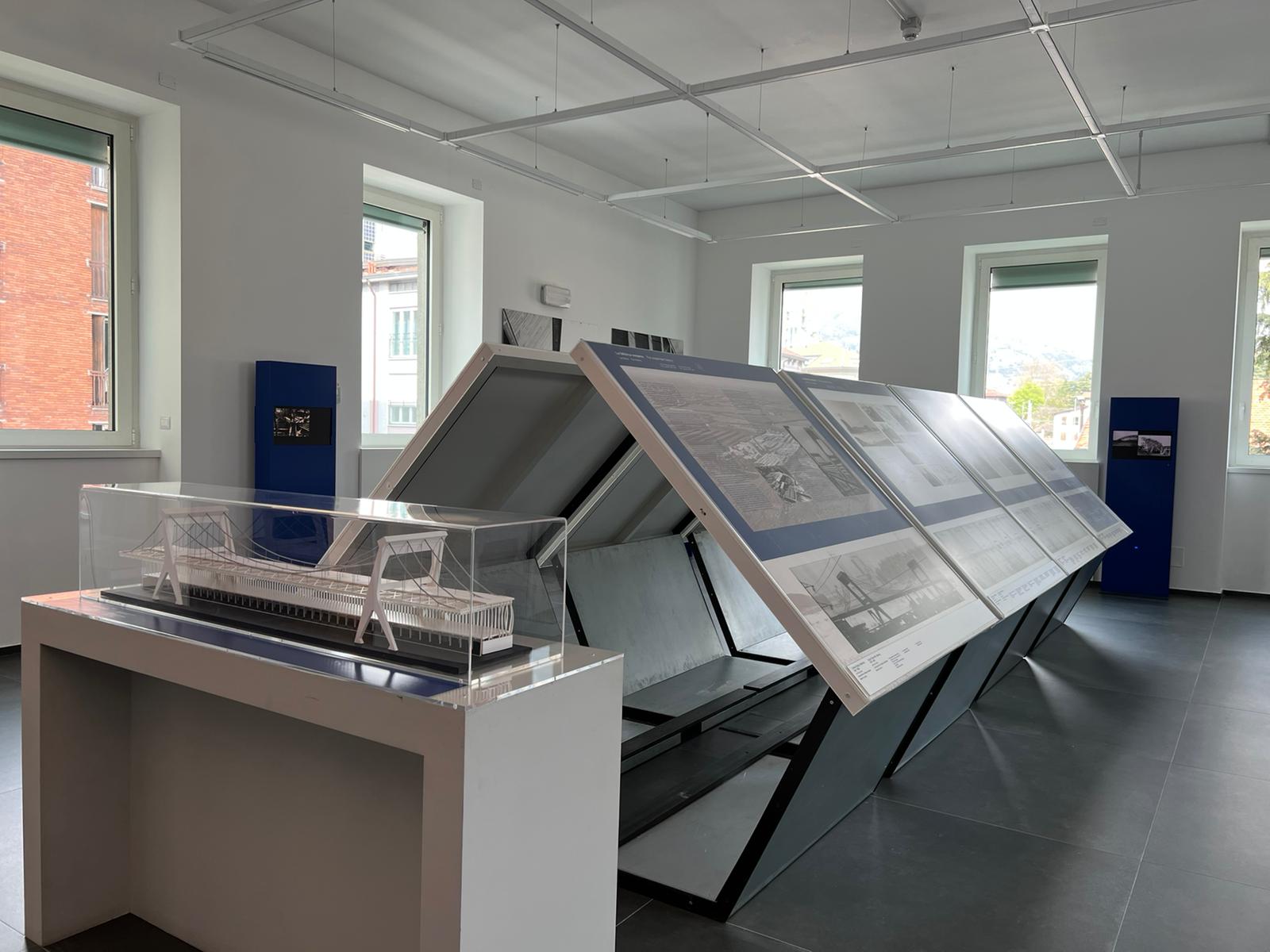The elegant megastructure of the Cartiera Burgo paper mill in Mantua, designed and built by Pier Luigi Nervi between 1961 and 1964, is unique among Nervi's many projects. If the final image is the result of a formal experimentation that remained an isolated case within the engineer's professional parabola, the construction procedure, on the other hand, sums up his path as a builder: the disposable formwork, the ground forms of the prefabricated elements and the ribbed floors with mobile scaffolding are the synthesis of a construction thought characterised by rationality, practicality and organisational intelligence.
More than half a century later, the exhibition dedicated to the recovery of the Paper Mill presents visitors with a brief excursus on the history of the project and its realisation, flanked by the story of the restoration project carried out since 2016 to accompany the reconversion of the industrial complex desired by the new owners.
The exhibition boards (4 for the historical documentation part, 4 dedicated to the restoration project) consist of project drawings and photographs accompanied by an illustrative text. In addition to the explanatory plates, there is a structural model of the paper mill building as designed by Pier Luigi Nervi.
The restoration of the Burgo Paper Mill, designed by Massimo Narduzzo and Giuseppe Ruscica with CREA:RE, was awarded the 'Docomomo Rehabilitation Award' 2021 in the 'Sustainable Uses' category.





